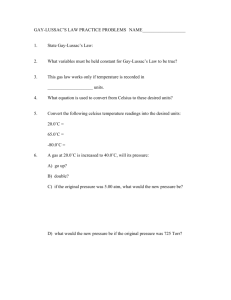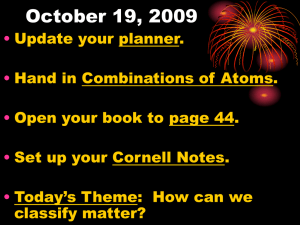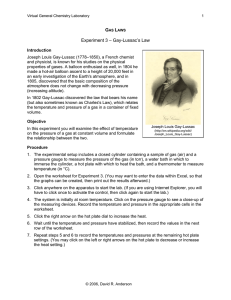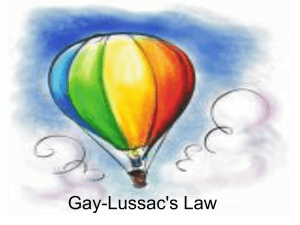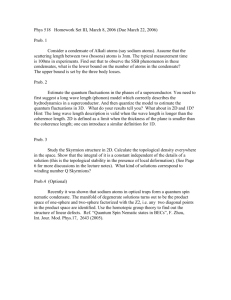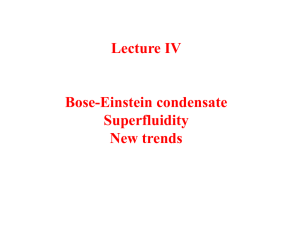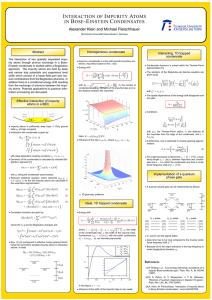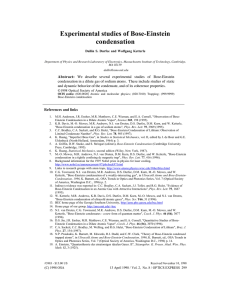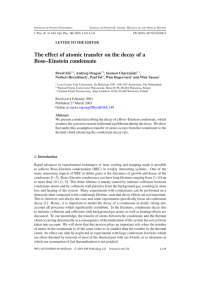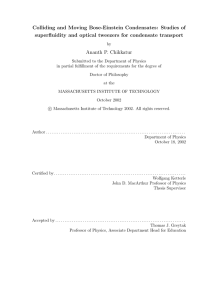Absolute Zero Lesson Plan Template
advertisement
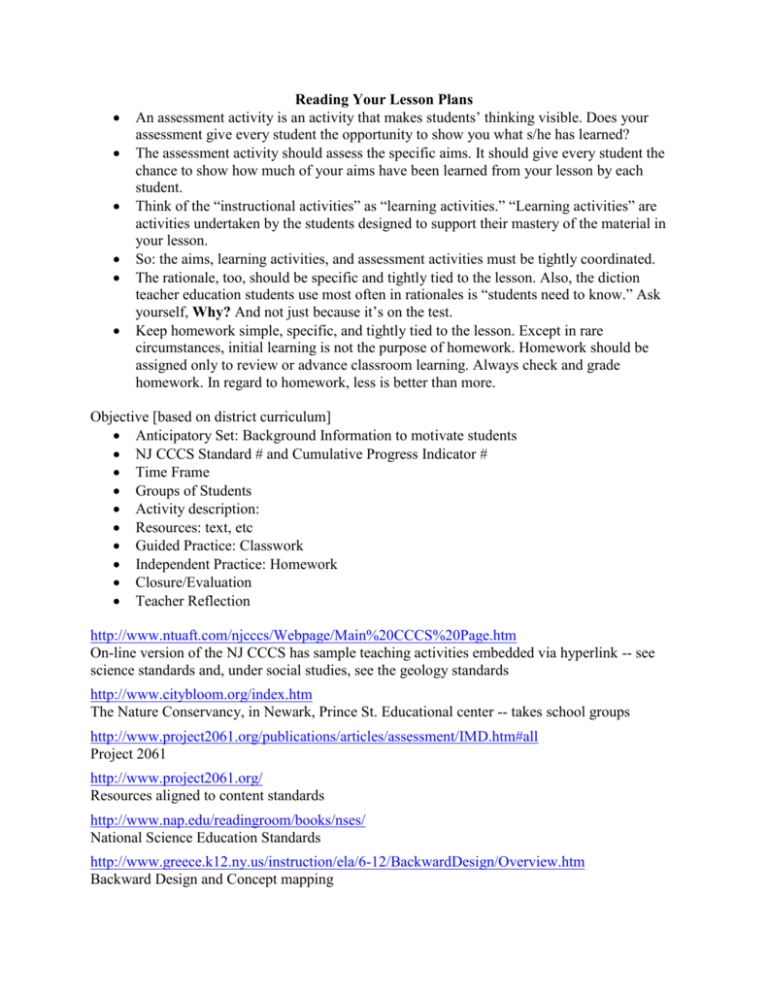
Reading Your Lesson Plans An assessment activity is an activity that makes students’ thinking visible. Does your assessment give every student the opportunity to show you what s/he has learned? The assessment activity should assess the specific aims. It should give every student the chance to show how much of your aims have been learned from your lesson by each student. Think of the “instructional activities” as “learning activities.” “Learning activities” are activities undertaken by the students designed to support their mastery of the material in your lesson. So: the aims, learning activities, and assessment activities must be tightly coordinated. The rationale, too, should be specific and tightly tied to the lesson. Also, the diction teacher education students use most often in rationales is “students need to know.” Ask yourself, Why? And not just because it’s on the test. Keep homework simple, specific, and tightly tied to the lesson. Except in rare circumstances, initial learning is not the purpose of homework. Homework should be assigned only to review or advance classroom learning. Always check and grade homework. In regard to homework, less is better than more. Objective [based on district curriculum] Anticipatory Set: Background Information to motivate students NJ CCCS Standard # and Cumulative Progress Indicator # Time Frame Groups of Students Activity description: Resources: text, etc Guided Practice: Classwork Independent Practice: Homework Closure/Evaluation Teacher Reflection http://www.ntuaft.com/njcccs/Webpage/Main%20CCCS%20Page.htm On-line version of the NJ CCCS has sample teaching activities embedded via hyperlink -- see science standards and, under social studies, see the geology standards http://www.citybloom.org/index.htm The Nature Conservancy, in Newark, Prince St. Educational center -- takes school groups http://www.project2061.org/publications/articles/assessment/IMD.htm#all Project 2061 http://www.project2061.org/ Resources aligned to content standards http://www.nap.edu/readingroom/books/nses/ National Science Education Standards http://www.greece.k12.ny.us/instruction/ela/6-12/BackwardDesign/Overview.htm Backward Design and Concept mapping Lesson Plan Template Instructor’s Name: Karina Aliaga Course Title: Chemistry Class Unit: Gas Laws Topic: Absolute Zero Grade Level: High School Rationale: It is important for students to understand that pressure, volume and temperature are interrelated. While these relationships provide a large scale picture of a system, at a fundamental level they arise from properties of different states of matter and the oscillations within their atoms and molecules. NJ State Standards: 5.2.12.C.1 Instructional Goal(s): The students will be able to identify the relationship between temperature and pressure. In addition, they will be able to understand the main ideas behind absolute zero. Performance Objective: The students will learn about Absolute Zero and Gay-Lussac’s Law. They will gain a greater understanding of the behavior of atoms and molecules as well as the relationship between pressure and temperature, will perform an experiment. Lesson Content: The lesson to be taught is about Absolute Zero. The students will learn what absolute zero is and its history. In addition, they will learn about Gay-Lussac’s Law and how to find absolute zero. Finally, they will learn how to implement their knowledge and predict a value for absolute zero experimentally. Also, they will learn about the introduction of a new state of matter called BoseEinstein Condensate and how it can be used in the future. Time frame for the Lesson: Time Frame of Activity 1st Period : 1st Period: 2nd Period Activity to be performed Introduction to Gay-Lussac’s Law Learning about Absolute Zero and its interesting facts Perform Experiment and analyze results Note: All times are approximate, and should be revised based upon student progress) Instructional procedures: a. Focusing event – Students will be motivated to learn about absolute zero by asking them questions such as: 1. What is the coldest temperature you have experienced? 2. How low can the temperature possible get? b. Bridge/ Connections – Students will be able to relate their understanding of the interactions between molecules to absolute zero. c. Teaching procedures –A power-point presentation will be presented which will discuss the history attempts to reach absolute zero. In addition, the students will perform an experiment or the teacher will demonstrate with the student’s input and interaction. d. Formative check –Students will be asked targeted questions to ascertain their understanding of the concepts such as: 1. In Gay-Lussac’s law, what are the two factors that are kept constant? 2. What kind of relationship would you expect between gas pressure and temperature? 3. What should happen to pressure if the temperature (Kelvin) is doubled? e. Student participation- As a demonstration of the experiment, the teacher can allow the students to participate by permitting them to bring materials or helping when using the Logger Pro program. f. Interdisciplinary connections – The experiment and lesson demonstrates the interactions between math and understanding of the physical properties of matter. g. Closure- Students will learn about possible usages of getting close to absolute zero such as: 1. Bose-Einstein Condensate is achieved. 2. Bose-Einstein Condensate could be used to slow down light. 3. Ultra cold atoms could be used to store information in the future. Materials and Aids: Logger Pro software. Vernier temperature and pressure probes, beakers and water at various temperatures.
